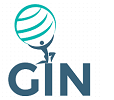A major trend being witnessed in the realm of robotic catheter systems is the digitization of instruments, which has resulted in the development of automated and integrated cardiovascular interventional laboratories. The robotic technology is progressing at a fast rate and assisting hospitals in reducing catheterization lab expenses, particularly in remote places.
Furthermore, robotic catheter systems commercialization has positively influenced the operational effectiveness of Cath laboratories, all over the world. Even with these systems' high prices, they are increasingly being accepted because of their benefits as compared to traditional catheterization approaches.
Understanding Robotic Catheter System
The robotic catheter system is intended to ease control and enable stable as well as accurate positioning of catheters in the cardiovascular system. This technology offers the potential to overcome some boundaries of manual control by integrating easy navigation with a readily accessible wide navigational field.
Moreover, this technology also offers the capability to decrease the operator's radiation exposure due to the remote location of the workspace from the fluoroscopy unit.
Additionally, due to greater catheter steadiness and ease of navigation with the robotic system, overall fluoroscopy duration, as well as staff and patient exposure to radiation can potentially be lessened.
Significance of Robotic Catheter Systems
Over the past few years, medical practitioners, all over the globe, have reported work-related dangers because of radiation exposure during fluoroscopy, particularly while carrying out interventional cardiology measures. They are frequently exposed to the danger of work-related dangers like the development of cataracts and augmented danger of malignancy, such as neck and head tumors.
As robotic catheter systems can decrease the risk of work-related dangers like orthopedic trauma, infections, and ionizing radiation, their demand is increasing significantly from healthcare centers.
Moreover, the rising incidence of chronic cardiovascular diseases like coronary artery ailment and arrhythmia, mainly because of inactive lifestyle and age-associated factors is also increasing the robotic catheter systems requirement. This will be primarily because of the fact that robotic catheters are extensively employed for the management and diagnosis of cardiovascular diseases, with little pain and invasion.
In addition, the high accuracy of these systems in different medical processes promotes their acceptance all over the world.
Robotic Catheter Systems are Majorly Used in North America
North America is the largest user of robotic catheter systems. This is primarily because of the increase in the number of patients with cardiovascular diseases, cardiac catheterization has appeared as the most extensively conducted cardiac method in this continent.
In addition, in North America, the U.S. is the main user of robotic catheter systems. This is because most of the fact that the major companies that have commercialized robotic catheter systems have their manufacturing base or are headquartered in this country. Moreover, this also renders suitable distribution of their products in this nation.
In Closing
As robotic catheter systems lessen the danger of work-related dangers and as the incidence of cardiovascular diseases increases, their requirement will continue to surge in the years to come.





.jpg)

.jpg)























